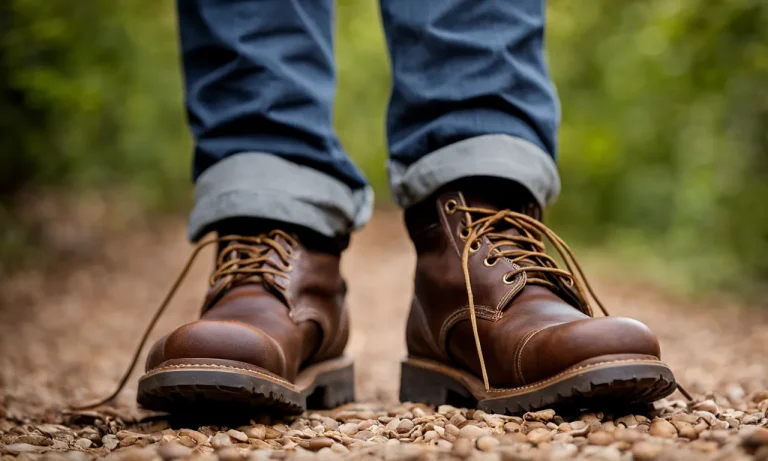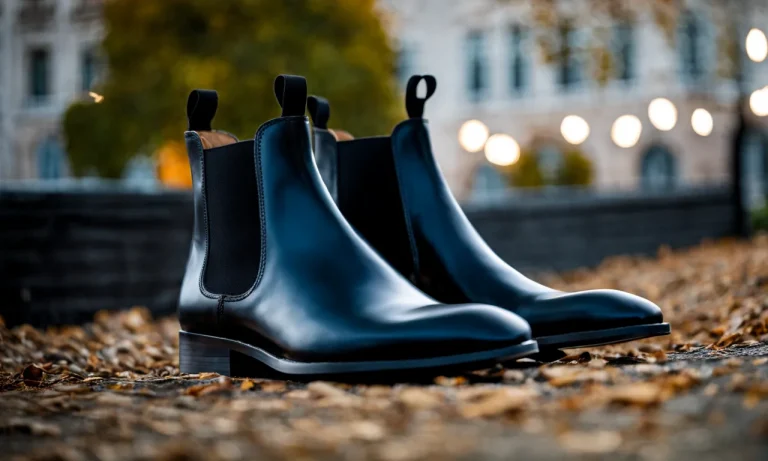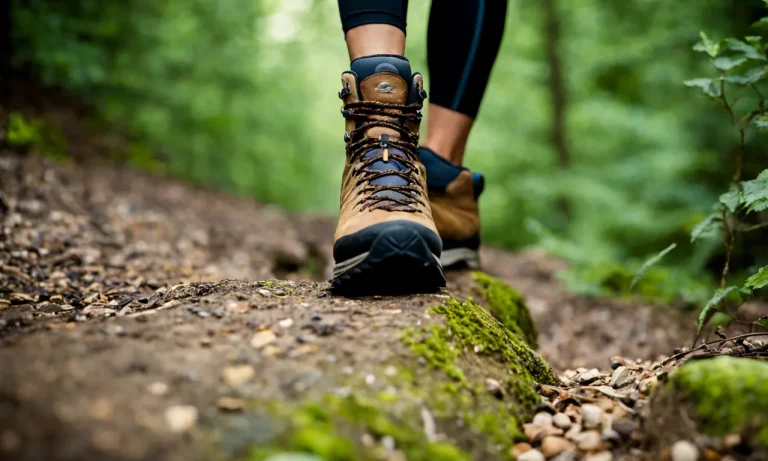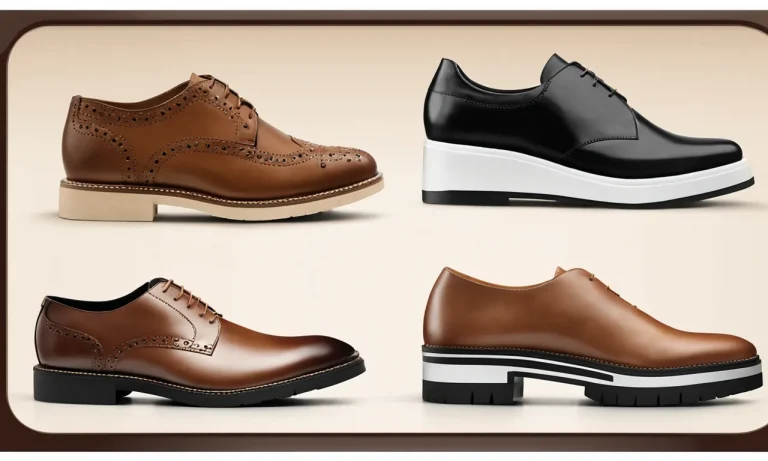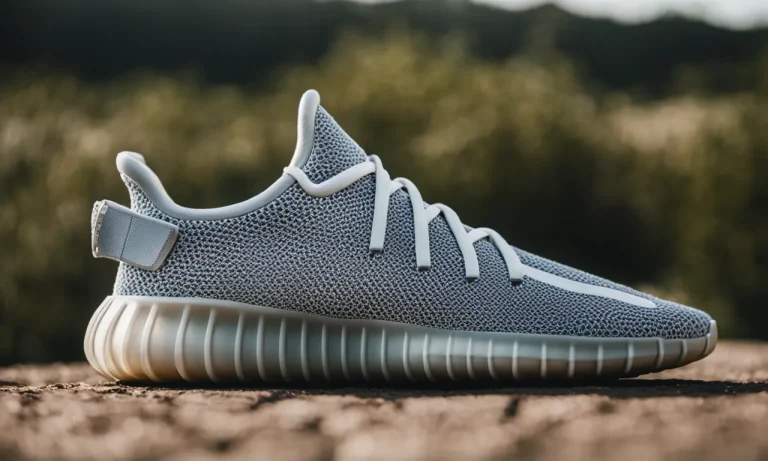Boots that are made for walking have been popular footwear for decades, but what exactly makes them good for walking? This comprehensive guide will examine the history, features, and benefits of boots made for walking so you can decide if they are right for you.
If you’re short on time, here’s a quick answer: Boots made for walking often have thicker, lugged soles for traction and shock absorption, ankle support, and comfortable cushioning to make walking long distances easier on your feet.
A Brief History of Boots Made for Walking
Boots have been a staple in footwear for centuries, providing protection and comfort for the wearer. Over the years, different types of boots have emerged, each with its own unique style and purpose. Let’s take a journey through time and explore the history of boots made for walking.
Cowboy boots in the 1800s
One of the most iconic types of boots, cowboy boots, originated in the 1800s in the American West. These boots were designed to withstand the rugged conditions of cattle ranching and horseback riding. With their high heels and pointed toes, cowboy boots provided stability in the stirrups and protected the feet and lower legs from thorny plants and snake bites.
Today, cowboy boots are not only worn by cowboys but have also become a fashion statement for many.
Hiking boots in the early 1900s
As outdoor activities gained popularity in the early 1900s, the need for sturdy and comfortable boots for hiking and mountaineering arose. Hiking boots were designed with durable materials, such as leather and rubber, to provide traction and support on uneven terrains.
These boots featured ankle support, waterproofing, and rugged soles to help hikers navigate through challenging landscapes. Hiking boots continue to be an essential piece of gear for outdoor enthusiasts today.
Go-go boots in the 1960s
The swinging 60s brought a revolution in fashion, and go-go boots became a symbol of the era. These knee-high boots, often made of shiny vinyl, were popularized by dancers in nightclubs and became a fashion trend embraced by women of all ages.
Go-go boots were not only stylish but also comfortable, with their low heels and easy slip-on design. They added a touch of glamour to any outfit and are still a popular choice for costume parties and retro-themed events.
Doc Martens in the 1970s and beyond
In the 1970s, a new type of boot emerged that would revolutionize footwear fashion – the Doc Martens. Originally designed as work boots, Doc Martens gained popularity among punk rockers and soon became a symbol of rebellion and nonconformity.
With their distinctive yellow stitching, chunky soles, and durable leather, Doc Martens were embraced by various subcultures and have stood the test of time. Today, they are worn by people from all walks of life, making a bold statement and providing both style and comfort.
So, whether you’re strutting in cowboy boots, conquering mountains in hiking boots, channeling the 60s in go-go boots, or expressing your individuality in Doc Martens, boots made for walking have a rich history and continue to make a fashion statement.
Key Features of Boots Made for Walking
Thick, lugged soles
When it comes to boots made for walking, one of the most important features to consider is the thickness and traction of the soles. Thick, lugged soles provide excellent grip and stability, especially when walking on uneven or slippery surfaces.
These boots are designed to tackle various terrains, from rugged trails to city pavements, ensuring you stay steady on your feet.
Ankle support
Another key feature of walking boots is the ankle support they provide. Walking involves repetitive movements and puts strain on your ankles. Boots with proper ankle support help prevent injuries such as sprains and twists.
Look for boots with padded collars and firm ankle support to ensure your feet and ankles are well protected.
Cushioned insoles
Comfort is paramount when it comes to walking boots, and cushioned insoles play a crucial role in providing it. These insoles are designed to absorb shock and provide extra padding to enhance comfort during long walks. They help reduce foot fatigue and provide support to the arches of your feet.
With cushioned insoles, you can enjoy your walks without discomfort or pain.
Waterproof materials
Walking boots often come with waterproof materials, such as Gore-Tex or treated leather, to keep your feet dry in wet conditions. Whether you encounter puddles, streams, or rain showers, having waterproof boots will keep your feet protected and prevent discomfort.
Waterproof boots are also breathable, allowing moisture to escape and keeping your feet dry from sweat.
When choosing boots made for walking, keep in mind these key features for a comfortable and enjoyable walking experience. Remember to try on different brands and styles to find the perfect fit for your feet and walking needs.
Benefits of Wearing Walking Boots
Traction and Stability
One of the key benefits of wearing walking boots is the superior traction and stability they provide. Walking boots are designed with sturdy rubber soles that offer excellent grip on various terrains, including slippery surfaces and uneven terrain.
This helps to prevent slips and falls, providing a secure footing and enhancing your overall safety while walking.
In fact, a study conducted by the American Orthopedic Foot & Ankle Society found that individuals who wore walking boots experienced fewer instances of accidents and injuries compared to those who wore regular shoes.
Impact Absorption
Walking boots are also known for their effective impact absorption properties. When you walk, your feet and joints endure a significant amount of shock with each step. Walking boots are specifically designed with cushioning materials and shock-absorbing features to minimize the impact on your feet, ankles, and knees.
A study published in the Journal of Sports Sciences revealed that walking boots can reduce the impact on joints by up to 30% compared to regular shoes. This can be particularly beneficial for individuals with joint problems or those who engage in long-distance walking or hiking.
Injury Prevention
Wearing walking boots can significantly reduce the risk of foot and ankle injuries. The high-top design of these boots provides additional support and stability to your ankles, helping to prevent sprains and twists.
This is particularly important when walking on uneven surfaces or navigating challenging terrains.
A study conducted by the American College of Sports Medicine showed that individuals who wore walking boots had a lower incidence of ankle sprains compared to those who wore regular shoes. This underscores the importance of investing in quality walking boots to protect yourself from potential injuries.
All-day Comfort
Comfort is another major benefit of wearing walking boots. These boots are designed with cushioned insoles and padded collars, providing a snug and comfortable fit for your feet. The additional arch support offered by walking boots helps to distribute weight evenly, reducing fatigue and minimizing the risk of foot pain or discomfort.
According to a survey conducted by the American Podiatric Medical Association, individuals who wore walking boots reported higher levels of comfort and satisfaction compared to those who wore regular shoes.
This indicates that investing in a good pair of walking boots can greatly enhance your walking experience.
Considerations When Selecting Walking Boots
Where you’ll be walking
One of the first things to consider when selecting walking boots is where you’ll be walking. Are you planning to hike on rugged mountain trails or stroll along flat city streets? Different terrains require different types of boots.
For example, if you’ll be walking on uneven or rocky surfaces, you’ll want boots with sturdy ankle support and a durable sole. On the other hand, if you’ll be walking on mostly flat surfaces, you may prefer lightweight boots with flexible soles for added comfort.
Your foot shape and size
Another important consideration is your foot shape and size. Everyone’s feet are unique, and finding the right fit is crucial for comfort and preventing foot problems. Some people have wide feet or high arches, while others have narrow feet or flat arches.
It’s important to choose boots that accommodate your specific foot shape. Many brands offer boots in different width options to ensure a proper fit. It’s also a good idea to measure your feet and consult a size chart to find the right size.
Finding the right fit
When it comes to walking boots, finding the right fit is essential. Ill-fitting boots can cause discomfort, blisters, and even injuries. It’s recommended to try on boots in the afternoon or evening when your feet tend to be slightly swollen.
Walk around in the boots to get a feel for how they fit and whether there are any pressure points. Pay attention to the fit around the heel, arch, and toe box. A snug fit is important to prevent your foot from sliding around inside the boot, but make sure there’s enough room for your toes to wiggle comfortably.
Style preferences
While functionality and fit should be top priorities when selecting walking boots, it’s also worth considering your style preferences. Walking boots come in a variety of designs and colors, so you can find a pair that matches your personal taste.
Whether you prefer a classic leather look or a more modern and colorful design, there’s a boot out there for you. Remember, though, that style should never compromise the comfort and functionality of the boots.
Budget
Lastly, it’s important to consider your budget when selecting walking boots. Prices can vary greatly depending on the brand, materials, and features of the boots. It’s worth investing in a quality pair of boots that will last and provide the necessary support and comfort.
However, there are also affordable options available that offer decent performance. Research different brands and read reviews to find the best value for your budget.
Popular Brands of Walking Boots
Timberland
Timberland is a well-known brand that offers a wide range of walking boots. They are known for their durability and quality craftsmanship. Timberland boots are designed to provide comfort and support for long walks or hikes.
They come in various styles, from classic leather boots to more modern designs. Timberland boots are also known for their waterproof features, making them a popular choice for outdoor enthusiasts.
Dr. Martens
Dr. Martens is another popular brand that has been around for decades. They are known for their iconic chunky boots that are not only stylish but also highly durable. Dr. Martens boots are often made of high-quality leather and have a distinctive air-cushioned sole, providing excellent comfort and support for walking.
These boots have become a fashion statement for many, as they can be paired with a variety of outfits.
Blundstone
Blundstone is an Australian brand that specializes in creating durable and versatile boots. Their boots are made of premium leather and are designed to withstand various weather conditions. Blundstone boots are known for their slip-resistant soles, making them ideal for walking on different terrains.
They offer a wide range of styles, from classic Chelsea boots to more rugged work boots.
Merrell
Merrell is a brand that focuses on creating performance-driven footwear for outdoor activities. Their walking boots are designed to provide maximum comfort and support while maintaining a lightweight feel.
Merrell boots often feature advanced technologies such as Vibram outsoles for excellent traction and Gore-Tex waterproofing for protection against wet conditions. These boots are a popular choice among hikers and outdoor enthusiasts.
Keen
Keen is a brand that prides itself on creating footwear that combines style, comfort, and durability. Their walking boots are designed to provide excellent arch support and cushioning, allowing for long hours of walking without discomfort.
Keen boots often feature a roomy toe box, making them a great choice for individuals with wider feet. They also offer various styles, from lightweight hiking boots to more rugged options for challenging terrain.
Conclusion
Boots made for walking have evolved over the decades into specialized footwear optimized for stability, traction, and comfort on long treks. With their sturdy construction and ergonomic features, it’s no wonder walking boots remain a popular choice among hikers, travelers, and anyone on their feet all day.
With an understanding of the history, benefits, and different styles available, you can now confidently choose the perfect pair of boots made for walking to meet your needs and keep you moving in comfort.

